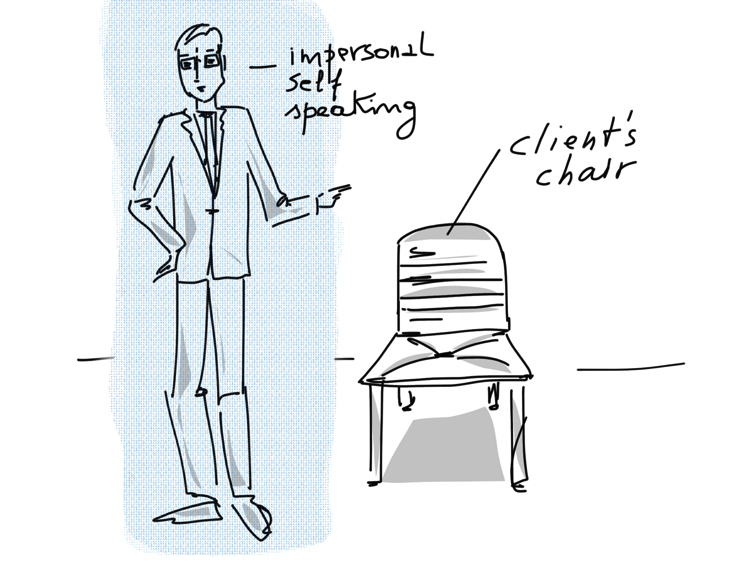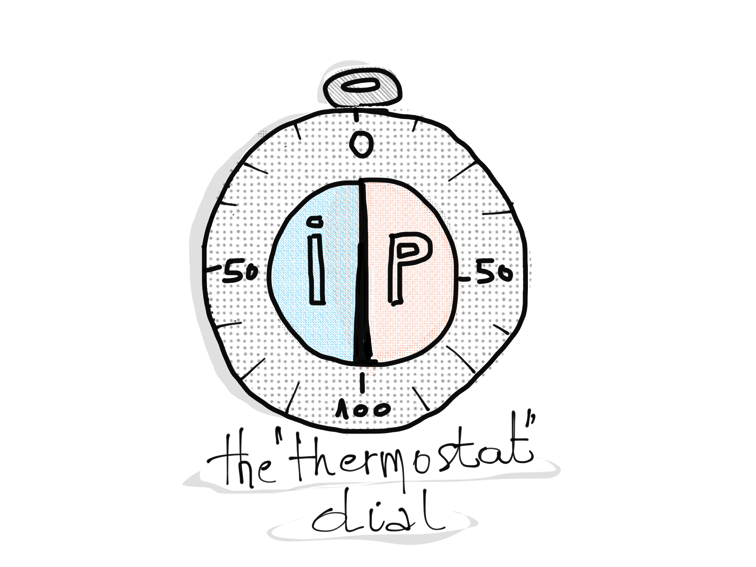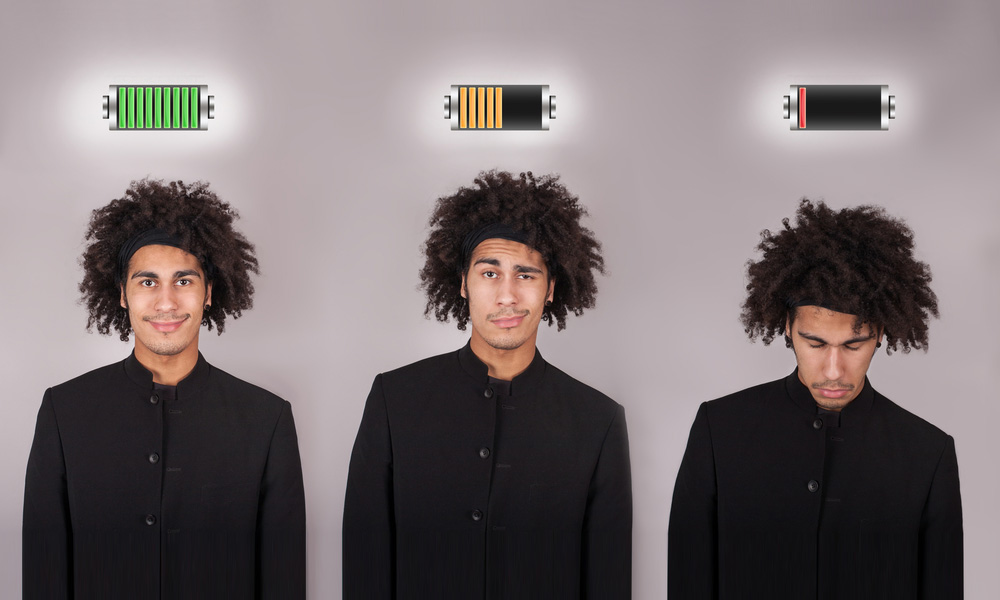Practical exercise
Author: Robert Stamboliev
A coach can never have enough exercises at hand. Our language is full of expressions: she’s a ‘warm person’, he’s a ‘cool customer’, ‘he takes everything too personally’, or ‘it just bounces off of her’. What binds these concepts is that they are all part of a powerful yet basic polarity in the way we handle relationships with others: the tension between personal and impersonal energy.
Personal or Impersonal
People who are ‘personally’ oriented have the ability to be open to others and to ‘be there’ for them. For example, personal energy makes it possible to create a pleasant connection with the other and to make him or her feel at ease.
Businesslike or impersonal energy allows you to keep your distance. You draw a virtual boundary between yourself and the outside world and build up a kind of wall. Because of this shield, the other person cannot simply enter your world unimpededly.
People are usually not aware of their own approach. Both modes have their advantages and disadvantages. People who are energetically open can easily make connections but may also be more easily hurt if this ‘closeness’ is not appreciated. People who are naturally more impersonal are able to maintain perspective but may often lack empathy and can be perceived by ‘personal’ people as being too aloof.
These are common themes I focus on as a coach within my practice.

Impersonal Energy
With Voice Dialogue, the Facilitator (F) enters into conversation with sub-personalities in the Client (C). The facilitator doesn’t just speak to the client as a whole person, but enters into conversation with a particular character of a sub-personality within the client, who is responsible for this character. He talks with the various sub-personalities so that the client can get to know themselves better and form an ‘Aware Ego’ which will be able to choose which sub-personality to employ when and to what degree.
In the following dialogue, the facilitator enters into conversation with the client’s sub-personality representing all her businesslike energy.
F: “How are you behaving?”
C: “I am rational, intelligent.”
F: “How do you help C?”
C: “When she is being attacked, if she is told, for instance: ‘you’re not doing it well enough’, then I help her. I erect a kind of wall around her and tell her ‘you’re doing a good job’.”
F: “So, if you then receive criticism, this isn’t really heard?”
C: “Yes, exactly.”
F: “How does this feel? Can you describe it?”
C: “I am a verbal kind of person. I see patterns and can identify and understand how things are. When this works I can keep both feet firmly on the ground.”
Impersonal energy provides focus and clarity; it allows for autonomy and invulnerability. This impersonal mode helps to not immediately say “yes” to questions and suggestions from others, but to consider them first. It can be helpful to use this energy during a meeting, so that the right decisions can be made.

Personal Energy
The more you bring in personal energy, the more you will get back in touch with the emotions and needs of others. This creates connection and support. In the following dialogue the facilitator enters into conversation with the client’s sub-personality representing her personal energy.
F: “When you bring up your personal energy, what do you feel?”
C: “Warmth.”
F: “How are you experiencing our interaction?”
C: “Like a warm bath.”
F: “When you look around you, what do you notice? Are others also feeling your energy?
C: “I see a lot of smiling faces, which is nice.”
F: “Try to now reduce this energy, from 100% to 50% and then to 20%. This way we will distance ourselves from each other again.”

Thermostat Dial
The last intervention of the facilitator invites you to gain control over the extent to which you can add or decrease personal energy. It really is true that you can switch ‘on’ a certain energy within yourself by, as it were, rotating the dial higher. And you can switch it ‘off’ again by turning it back down. This allows you to symbiotically merge with the other at maximum personal energy, or to once again rely on yourself and affirm the clear boundaries around your own system, by scaling back your personal energy. By using this ‘thermostat dial’, you can learn to feel, in body and mind, what it does to you when you focus your full attention on the other (personal energy), or when you are more defined and focused on yourself (impersonal energy). The objective is to become aware of when, with whom and in what situation, you have a greater tendency for one or the other. Neither of the two is right or wrong!
Personal energy creates connection and support
Impersonal energy provides focus and clarity
Exercise
Personal and Impersonal Energy in Interaction with the Other
The following exercise is intended to offer the client more insight, to teach him or her how to adjust the thermostat and to learn how to consciously deal with these energies.
Facilitator and client sit opposite each other, in such a way that each person can either feel a private space around themselves or – if desired – feel connected with the other. Both briefly close their eyes and relax. They then turn on their personal energy to the maximum. Each examines how that feels: comfortable, awkward? Are you still breathing? What are you feeling in your body?
Then they both rotate the internal thermostat to 50% and observe what happens; then to 25% and 0%. Notice the contact with the ground, your breathing. If necessary, bring back more energy to yourself or release energy from the other. Both return to the initial position; they come back to themselves and briefly close their eyes again.
Now they each call up their impersonal energy and turn it on.
Connect with the other and detect how this feels. How do you see the other person now? What are his or her strong and weak sides? What would it be like, for example, to build a house with this person? Is the connection different from the previous exercise?
Now turn the dial back in increments, from 100% to 50% and from 25% to 0%.
Briefly exchange what it was like to do and experience all this.
After completing this first round, both persons do the exercise two more times using the same structure, but this time with each person using the opposite energy; the one in personal energy while the other uses impersonal energy. What is it like to sense the different energies? How do you experience yourself and the other now?
Through performing these exercises three times, each time with a different combination of energies, clients can gain an insight into the energetic interaction between people. From this experience, the facilitator can determine, together with the client, a set of lessons and tools to enable the client to consciously play with this process.
Robert Stamboliev is founder of the ITP Institute for Transformational Psychology. He works as a personal coach, relationship therapist and trainer. www.stamboliev.com
Literature
- Brugman, K., Budde, J., & Collewijn, B. (2014). Me, my Selves and I. Zaltbommel: Thema.
- Stamboliev, R. (1992). De energetics of Voice Dialogue. Mendocino, CA: LifeRhythm.
- Stone, H., & Stone, S. (2000). Partnering, a new kind of relationship. Novato, CA, United States: Nataraj Publishing
Illustrations
- Franca Errani from Innerteam, Italy.

